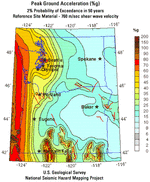- Messages
- 2,948
- Reactions
- 2,214
Few bits: If your house is a 1991, chances are good the only thing you should check on is if your house is bolted to the foundation. I'm fairly sure it is, but it's cheap to check. If you have a conventional slab construction (which is more common in CA) you definitely have a bolted foundation.
Stick framed houses ride out earthquakes pretty well, you will get cracks in the walls, and if you have tile and concrete floors it's also likely, but the house otherwise won't suffer much damage. This may change if your absurdly large ammo collection is on the second floor.
If you're in a liquefaction zone... well none of this matters, unless you drive piles down to bedrock, which is pretty pointless at this point. There should be maps available that tell you if you're in this zone.
I grew up in EQ country, I rode out pretty much every major EQ in socal from 1980-2010 in the same house. The tile cracked, and we got a few cracks in the ceiling, my grandparents live out near where the landers quake was, and did not suffer any damage really, other than some fallen items, and a few feet of water sloshed out of the swimming pool.
The real damage with earthquakes is to infrastructure and large buildings. Provided a large building doesn't fall on your house, or that freeway overpass that goes over your house, you're probably going to be OK, even if it royally screws up transportation, power distribution, and the economy.
Stick framed houses ride out earthquakes pretty well, you will get cracks in the walls, and if you have tile and concrete floors it's also likely, but the house otherwise won't suffer much damage. This may change if your absurdly large ammo collection is on the second floor.
If you're in a liquefaction zone... well none of this matters, unless you drive piles down to bedrock, which is pretty pointless at this point. There should be maps available that tell you if you're in this zone.
I grew up in EQ country, I rode out pretty much every major EQ in socal from 1980-2010 in the same house. The tile cracked, and we got a few cracks in the ceiling, my grandparents live out near where the landers quake was, and did not suffer any damage really, other than some fallen items, and a few feet of water sloshed out of the swimming pool.
The real damage with earthquakes is to infrastructure and large buildings. Provided a large building doesn't fall on your house, or that freeway overpass that goes over your house, you're probably going to be OK, even if it royally screws up transportation, power distribution, and the economy.












